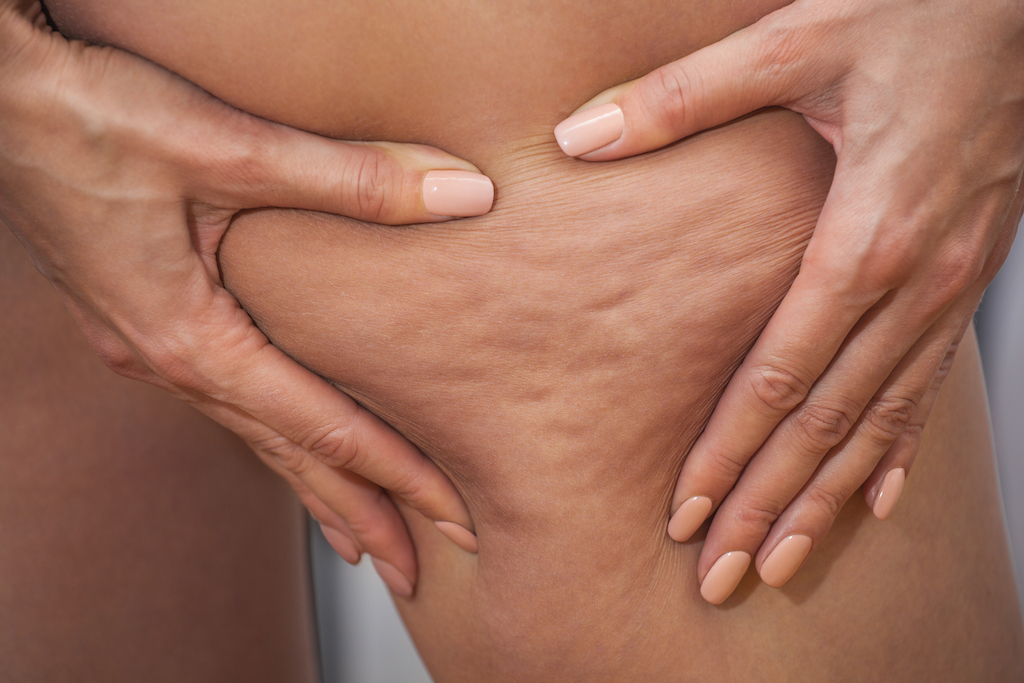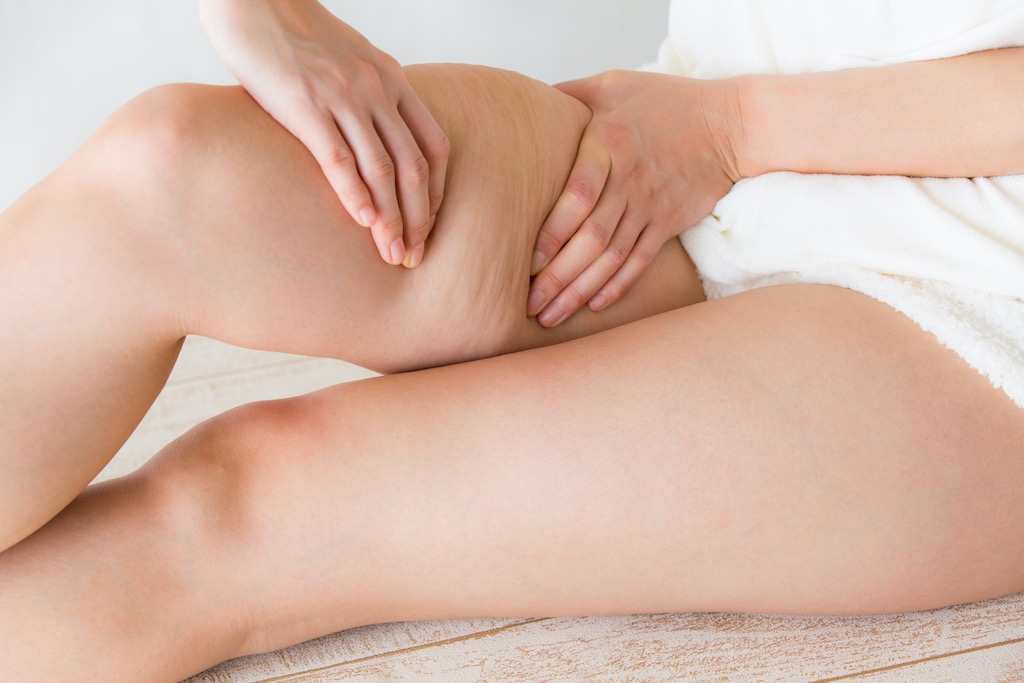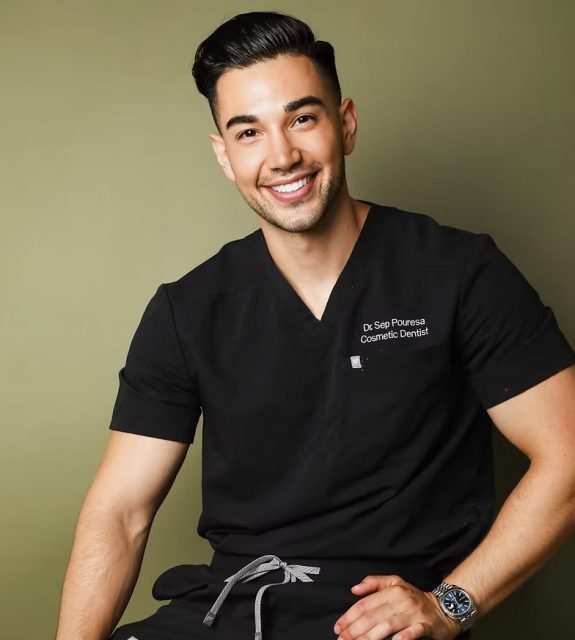Board-Certified Plastic Surgeon Dr. Alina Sholar was born in Port Arthur and grew up in Orange, TX, excelling in art, music, and science throughout her early school years. After receiving a full-tuition merit scholarship from the Nelda C. and H.J. Lutcher Stark Foundation in Orange, she received her BS degree in Biomedical Sciences with Magna Cum Laude honors from the College of Veterinary Medicine at Texas A&M University in December 1994. She was there awarded the prestigious Janet M. Glasgow Memorial Award and Achievement Citation for Women in Medicine, along with other meritorious honors and accolades like the Robert Wood Johnson Fellowship Award in medicine. Her medical artwork has been published in prestigious medical journals and textbooks such as the Annals of Plastic Surgery, Plastic & Reconstructive Surgery Journal, Annals of Surgical Oncology, and Cameron’s Current Surgical Therapy. Haute Beauty expert Dr. Sholar explains the true cause of cellulite while offering treatment options that help reduce the appearance of cellulite.
 Photo Credit: ShutterstockIf you have cellulite, you’re not alone. Research suggests that almost all adult women have some degree of cellulite on their abdomen, thighs, or buttocks.
Photo Credit: ShutterstockIf you have cellulite, you’re not alone. Research suggests that almost all adult women have some degree of cellulite on their abdomen, thighs, or buttocks.
Cellulite is 100 percent normal—and there’s absolutely nothing wrong with having it, loving it, or wanting to get rid of it. It's your body and your own comfort.
If you aren't a fan of your cellulite, no matter how many cellulite creams and exfoliating scrubs you use daily, you can’t actually make your dimples disappear without an in-office treatment with a plastic surgeon or dermatologist.
What is it exactly?
Cellulite refers to the “orange-peel” texture of the skin with a dimpled, lumpy appearance. Cellulite, contrary to popular belief, is not caused by fat. It's a harmless skin condition that can affect anyone, regardless of weight. About 90% of women will have cellulite at some point in their lives (usually after age 25), compared to just 10% of men.
The True Cause of Cellulite
Cellulite is not caused by “toxins,” although a healthy lifestyle may help reduce the risk. Cellulite is caused by the relationship between your skin, connective tissues, and the normal fat cells everyone has, plus the effects of hormones, age, genetics, and lifestyle on those structures.
The structure of your overlying skin and the underlying connective tissue determines whether a given area is smooth or has the rippled appearance of cellulite. Much like a button creating a pucker on a couch cushion, each dimple is caused by bands of dense, fibrous cords pulling downward on the skin’s surface, resulting in depressions and adjacent herniation (or pushing through) of fat upward against loose skin. The fibrous cords called septae are what connect your skin to your muscles. A study that used magnetic resonance imaging of women with cellulite found that the exact location of each “dimple” on the buttocks correlated to underlying perpendicular thick bands of tissue.
Additionally, the way that connective tissue is arranged varies, mainly by gender. In most males, the septae are arranged beneath the skin in a cross-hatched or diagonal manner, in a continuous pattern like a hurricane fence. In females, they tend to run vertically and perpendicular to the skin like a picket fence. Because of this, they tether the skin to the underlying tissue at certain points, creating the chambers in which fat cells push up on the skin while the bands pull it downward.
In general, cellulite has 5 compounded anatomic causes:
1. Loose Skin: Collagen and Elastin Loss
2. Tight Bands: Sclerotic Collagen
3. Fat Pad Hypertrophy and Herniation
4. Lymphatic Obstruction
5. Decreased Vascular Supply
A few studies have identified genes that appear to play roles in your susceptibility to cellulite. At least some of them deal with substances that influence inflammation, blood-flow regulation, estrogen receptors, and the biology of fat cells, which all are known to play roles in cellulite development. The increased risk of cellulite posed by one of the genes appears to be heightened in smokers.
Age also plays a major role. When you're young, your connective tissue is supple and elastic, stretching and giving way with the skin so everything remains smooth. Pubertal hormone changes kick off connective tissue changes. As we age, it becomes stiffer and less elastic, which makes the fibrous cords pull down on your skin even more. At the same time, your fat cells tend to expand in certain areas (especially if you're female), pushing out against the skin. Throughout adulthood, your outer layer of skin weakens, thins, and loses elasticity as collagen and elastin are lost. Gravity takes its toll, and the skin begins to sag. The septae continue to get tighter and stiffer. Blood vessels in your skin become more fragile. All of this makes cellulite more and more apparent.
There are also factors that can increase your chances of developing cellulite, and unlike the causes, you may be able to control some or all of them. Things that can increase the appearance of cellulite include:
• Weight changes
• Poor nutrition
• Lack of muscle tone
• Smoking
• Poor skin health
A lot of products and treatments are touted for cellulite. Some of them work well for some people, while others are only effective at taking your money. It's important to note that procedures that just remove fat- like liposuction, for instance- often have no impact on cellulite or can actually make it worse. It takes specialized medical procedures to have the effect you're looking for.
 Photo Credit: ShutterstockMedical Treatment Options: The New Fighters In The Ring
Photo Credit: ShutterstockMedical Treatment Options: The New Fighters In The Ring
Some new techniques have been very successful in reducing the appearance of cellulite by breaking up the bands of connective tissue under the skin’s surface.
EMTONE. Studies show that this completely non-invasive treatment reduces the appearance of cellulite. EMTONE is the first and only device that simultaneously delivers both thermal and mechanical energy to eliminate all main causes of cellulite and loose skin effectively and non-invasively. Synergistic emission of Monopolar Radiofrequency and Targeted Pressure Energy enables treatment of the root causes. Specifically, EMTONE has been shown to initiate a cascade of therapeutic responses, including disruption of fat cells, creation of collagen to thicken and strengthen the dermis, and increase lymphatic and blood circulation. Clinical studies demonstrate that EMTONE is 64% more effective than standalone cellulite treatments for building elastin, and 59% more effective for building collagen. Additionally, EMTONE was shown to be 50% faster than standalone therapies, with a 90% success rate of patient satisfaction. Most patients undergo 4 treatments, scheduled once or twice a week. A treatment typically takes about 20 minutes depending on the treated area. The most common perception of the therapy is that it is similar to a hot stone massage with intense mechanical vibrations. The treatment is performed in a relaxing lying-down position. Patients have reported improvements after a single treatment session. The results typically continue to improve over the next few months. With no downtime, you may resume normal activity immediately after the treatment. EMTONE can also be used on all body types with no BMI or skin color restrictions. Initial results typically last up to one year, depending on the severity of the case, but with a follow-up treatment every 2-3 months, results can be maintained.
QWO. QWO is the first and only injectable, non-surgical, chemical subcision treatment that is FDA-approved to address moderate to severe cellulite of the buttocks in adult women. QWO utilizes Collagenase Clostridium Histolyticum (CCH), a naturally occurring enzyme that has been shown to break down collagen in specific targeted areas to disrupt the fibrous septae. QWO is the only minimally invasive injectable proven to reduce the appearance of cellulite and improve the overall quality of the skin. The QWO solution is injected directly into cellulite dimples along the buttocks through an ultra-fine syringe. Most patients find the injection to be minimally painful and liken the treatment to the feeling of a rubber band snap. A single QWO treatment typically consists of 12 separate injections. The treatment itself takes only minutes to perform. Patients should plan to complete 3 treatments spaced about 3 weeks apart. When injected into the treatment area, QWO works to subsidise the fibrous septae (collagen bands) by enzymatically targeting collagen types 1 and 3. This release of the septae in turn releases the dimple, resulting in smoother skin and an improved appearance of cellulite. Treatment is done in three sessions, about three weeks apart. While results may vary, most patients achieve visible results 28 days after the third treatment. There is no downtime and patients may return to moderate physical activity and work immediately after treatment. Strenuous activity and exercise can be resumed the day after treatment. Most patients will enjoy a dramatic reduction in the appearance of their cellulite for up to 2-3 years following treatment.
Insider Tip:
QWO can be combined with EMTONE to achieve longer-lasting optimal results and garner the best of both treatments!
Physical Subcision. Called Cellfina, this medical procedure involves your surgeon inserting a needle just under the skin to break up the tough bands beneath the skin that cause us to see cellulite. Cellfina has been shown to reduce the skin dimpling that you see with cellulite. In a study of 232 patients, 99% of them said they were satisfied with the results. The results can last 2 years and possibly longer.
Laser Subcision Treatments. With one invasive laser treatment called Cellulaze, a tiny laser fiber is inserted beneath your skin. When the laser is fired, the laser energy breaks up the tough bands beneath the skin that cause us to see cellulite. This treatment can also thicken your skin, to help reduce the appearance of cellulite. Cellulaze may reduce the appearance of cellulite. Patients are seeing results that last a year or longer. More research is needed to know for sure how helpful this laser can be. Results can last 6 months or longer; however, a bit of dimpling usually returns.
Procedures Unlikely to Work
Other procedures have been found ineffective or are too new to be thoroughly evaluated, including:
• Laser-assisted liposuction
• Ultrasonic liposculpting
• Cryolipolysis
• Mesotherapy
Because cellulite is caused by uncontrollable factors and is so common in women, you shouldn't feel guilty about having it or consider it an indictment of your health or fitness.
At the same time, if you believe minimizing it would make you look or feel better, you should talk to your doctor to plan the safest, most likely methods to work for you given your overall health, budget, lifestyle, and treatment goals.





















